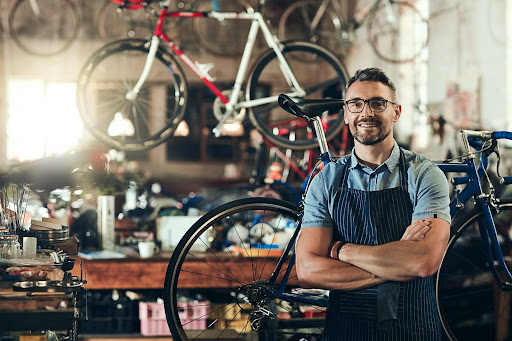As an avid cyclist with years of experience tinkering with bikes, I’m excited to share some comprehensive, budget-friendly upgrades that can significantly improve your riding experience. These modifications won’t break the bank but will make a noticeable difference in your bike’s performance, comfort, and longevity.
Contact Points Optimisation
Grip Upgrades
One of the most cost-effective upgrades starts with your contact points. New handlebar grips can transform your riding comfort for under £20. Look for ergonomic designs with good cushioning – your hands will thank you on those longer rides!
Saddle Solutions
While premium saddles can cost hundreds, there are excellent options in the £40-60 range. When choosing a saddle, consider the appropriate width for your sit bones, adequate padding for your riding style, and whether you need a pressure relief channel. Remember, the most expensive saddle isn’t necessarily the most comfortable – it’s about finding what works for your body.
Tire Optimisation
Maintenance Tips
Before investing in new tyres, ensure your current ones are properly maintained. This includes checking for proper inflation to recommended PSI, removing any embedded debris, and inspecting for even wear patterns. These simple maintenance steps can significantly extend tyre life and performance.
Smart Upgrades
When it’s time for new tyres, investing in quality rubber (£60-80 for a pair) can dramatically improve your ride quality and comfort, enhance grip in various conditions, increase puncture resistance, and reduce rolling resistance. This upgrade offers one of the best returns on investment for overall bike performance.
Comprehensive Bike Fit Adjustments
A proper bike fit doesn’t always require expensive professional services. Start by measuring your inseam for initial saddle height, calculating reach requirements, and documenting current settings before making any changes. Then proceed with fine-tuning by adjusting saddle height and setback, handlebar position and angle, brake lever reach, and optimising cleat positioning if you’re using clipless pedals.
Drivetrain Maintenance and Upgrades
Fresh brake and gear cables (£15-20 total) can revitalise your bike’s performance. Consider using premium cable housing for smoother operation, adding sealed end caps for weather protection, and maintaining a regular lubrication schedule. For chain care, invest in a quality chain cleaner tool (£20-30), use appropriate lubricants for your riding conditions, and learn to measure chain wear to prevent expensive repairs.
Performance Upgrades
When it comes to pedal systems, you have several options including quality platform pedals (£30-40) with replaceable pins, budget-friendly clipless pedals (£60-80), or hybrid pedals for versatility. For brake improvements, focus on premium brake pads (£15-25), compressionless housing upgrades (£20), and regular adjustment and maintenance.
Weight Reduction on a Budget
Strategic weight savings can be achieved without breaking the bank by replacing heavy tubes with lightweight ones (£10-15 each), switching to lighter bar ends (£20-30), and watching for sales on carbon seat posts (£50-70). These small changes can add up to noticeable performance improvements.
Pro Tips for Budget-Conscious Cyclists
To maximise your upgrade budget, subscribe to local bike shop newsletters, join cycling groups for gear swap opportunities, and learn basic maintenance through online tutorials. Invest in quality tools gradually, keep a maintenance log, and build relationships with local bike shops for occasional deals. These strategies will help you make the most of your cycling investment.
Seasonal Maintenance Schedule
Implement a year-round maintenance plan with spring deep cleaning and general tune-ups, summer regular cleaning and lubrication, fall weather-proofing preparations, and winter indoor maintenance and upgrade planning. This systematic approach helps distribute costs and maintenance efforts throughout the year.
Remember, the best upgrades aren’t always the most expensive ones. Focus on modifications that enhance your specific riding style and address your personal comfort needs. Start with the basics and gradually work your way up to more complex upgrades as your skills and knowledge improve.
Safety Notes
Always ensure any modifications you make don’t compromise your bike’s structural integrity or safety systems. When in doubt, consult with a professional mechanic. Keep detailed records of any changes you make to your bike.
Conclusion
Happy riding, and remember, the best upgrade is the one that gets you riding more often and with greater confidence! Feel free to share your own DIY upgrade experiences in the comments below.
Written by Niall O’Riordan UBS
